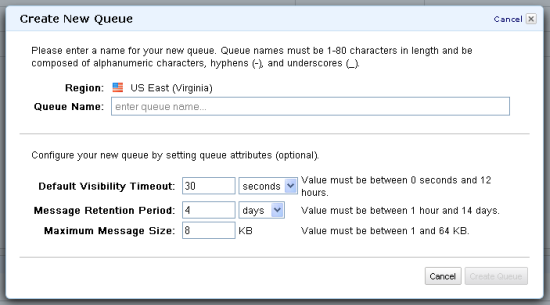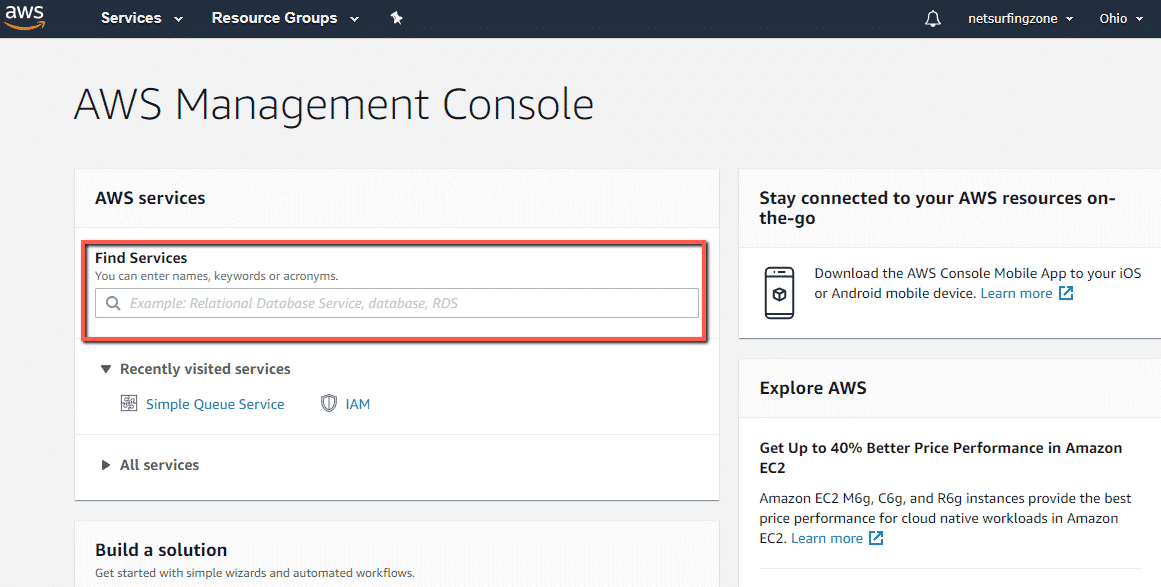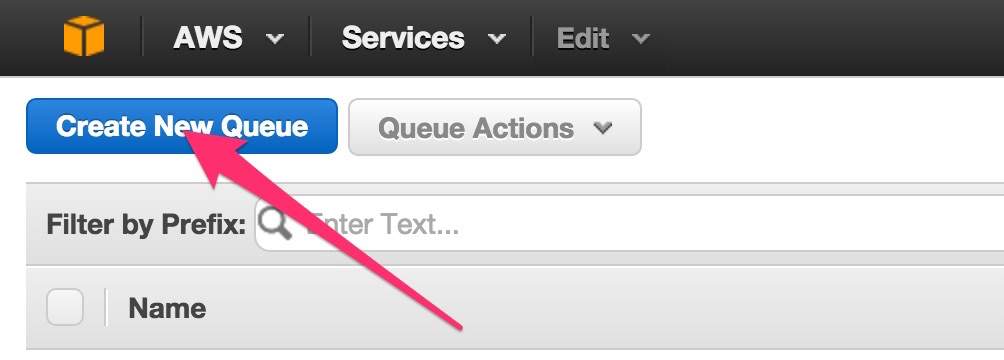

- CREATE AN AWS SQS QUEUE USING BOTO3 HOW TO
- CREATE AN AWS SQS QUEUE USING BOTO3 INSTALL
- CREATE AN AWS SQS QUEUE USING BOTO3 FULL
- CREATE AN AWS SQS QUEUE USING BOTO3 SOFTWARE
- CREATE AN AWS SQS QUEUE USING BOTO3 CODE
Import boto3 # Create an SQS client object sqs = boto3.
CREATE AN AWS SQS QUEUE USING BOTO3 CODE
Please refer to this code as experimental only since we cannot currently guarantee its validity ⚠ This code is experimental content and was generated by AI. Here is the Python code to retrieve all messages from an Amazon SQS queue using the Boto library: Repeat step 3 until all messages have been retrieved.Retrieve the messages from the queue using the receive_message() method.

CREATE AN AWS SQS QUEUE USING BOTO3 HOW TO
In this article, we will discuss how to retrieve all messages from an Amazon SQS queue using the Boto library in Python. Amazon SQS is a fully managed message queuing service that enables you to decouple and scale microservices, distributed systems, and serverless applications.Īmazon SQS uses a pull-based model, which means that your application requests messages from the queue and retrieves them.
CREATE AN AWS SQS QUEUE USING BOTO3 SOFTWARE
Please refer to Boto 3 SQS documentation here.| Miscellaneous ⚠ content generated by AI for experimental purposes onlyĪs a data scientist or software engineer, you may need to work with Amazon Simple Queue Service (SQS) to handle message queues and integrate processes within your applications. delete_message ( QueueUrl = test_queue_url, ReceiptHandle = message ) else : print ( 'Queue is now empty' ) break receive_message ( QueueUrl = test_queue_url, MaxNumberOfMessages = 10 ) # adjust MaxNumberOfMessages if needed if 'Messages' in messages : # when the queue is exhausted, the response dict contains no 'Messages' key for message in messages : # 'Messages' is a list # process the messages print ( message ) # next, we delete the message from the queue so no one else will process it again client. # in production/real setup, I suggest using long polling as you get billed for each request, regardless of an empty response while True : messages = client. send_message ( QueueUrl = test_queue_url, MessageBody = 'This is test message #' + str ( i )) # the response contains MD5 of the body, a message Id, MD5 of message attributes, and a sequence number (for FIFO queues) print ( 'Message ID : ', enqueue_response ) # next, we dequeue these messages - 10 messages at a time (SQS max limit) till the queue is exhausted. list_queues ( QueueNamePrefix = 'test_queue' ) # we filter to narrow down the list test_queue_url = queues # send 100 messages to this queue for i in range ( 0, 100 ): # we set a simple message body for each message # for FIFO queues, a 'MessageGroupId' is required, which is a 128 char alphanumeric string enqueue_response = client. create_queue ( QueueName = 'test_queue' ) # get a list of queues, we get back a dict with 'QueueUrls' as a key with a list of queue URLs queues = client. fifo, and you must pass FifoQueue = True client. client ( 'sqs' ) # create the test queue # for a FIFO queue, the name must end in. #!/usr/local/bin/python3 import boto3 # create a boto3 client client = boto3. We will use a standard queue, for FIFO Queues, see notes in the comments below. Location: /Library/Frameworks/amework/Versions/3.6/lib/python3.6/site-packages
CREATE AN AWS SQS QUEUE USING BOTO3 INSTALL
To install Boto 3, type pip3 install boto3 on the shell prompt. Please see this post for details on installing and getting started with Python 3.

You should already have python3 and pip3 installed. Here is a quick tutorial to familiarize yourself with SQS. You should already have an AWS account, and AWS configured on your development machine via AWS CLI’s aws configure command. If you’re used to JMS, then you may need some pivoting, as SQS is not exactly a JMS provider, but there is a library that can be used as a bridge between JMS and SQS. We use SQS heavily at Marqeta for various integration patterns. This allows for decoupling various components of the architecture, and cleaner hand-off of responsibilities across them.

SQS is a highly available and scalable PaaS for Messaging. In this post we will use SQS and boto 3 to perform basic operations on the service. Its fun, easy, and pretty much feels like working on a CLI with a rich programming language to back it up.
CREATE AN AWS SQS QUEUE USING BOTO3 FULL
In fact, this SDK is the reason I picked up Python - so I can do stuff with AWS with a few lines of Python in a script instead of a full blown Java setup.


 0 kommentar(er)
0 kommentar(er)
